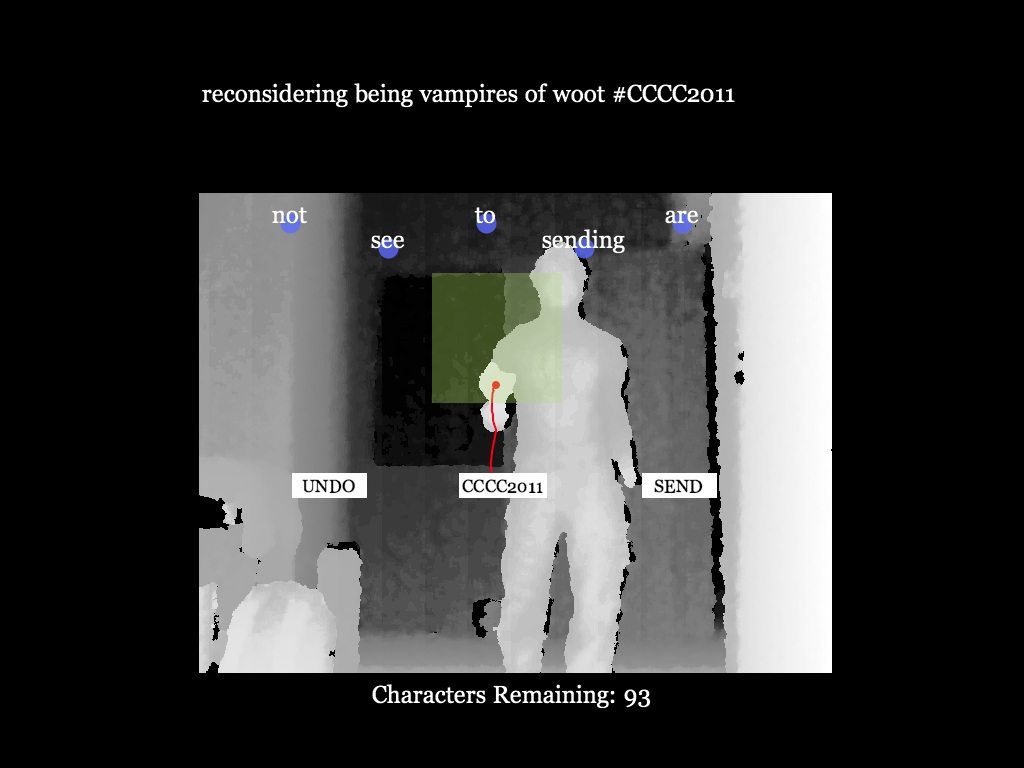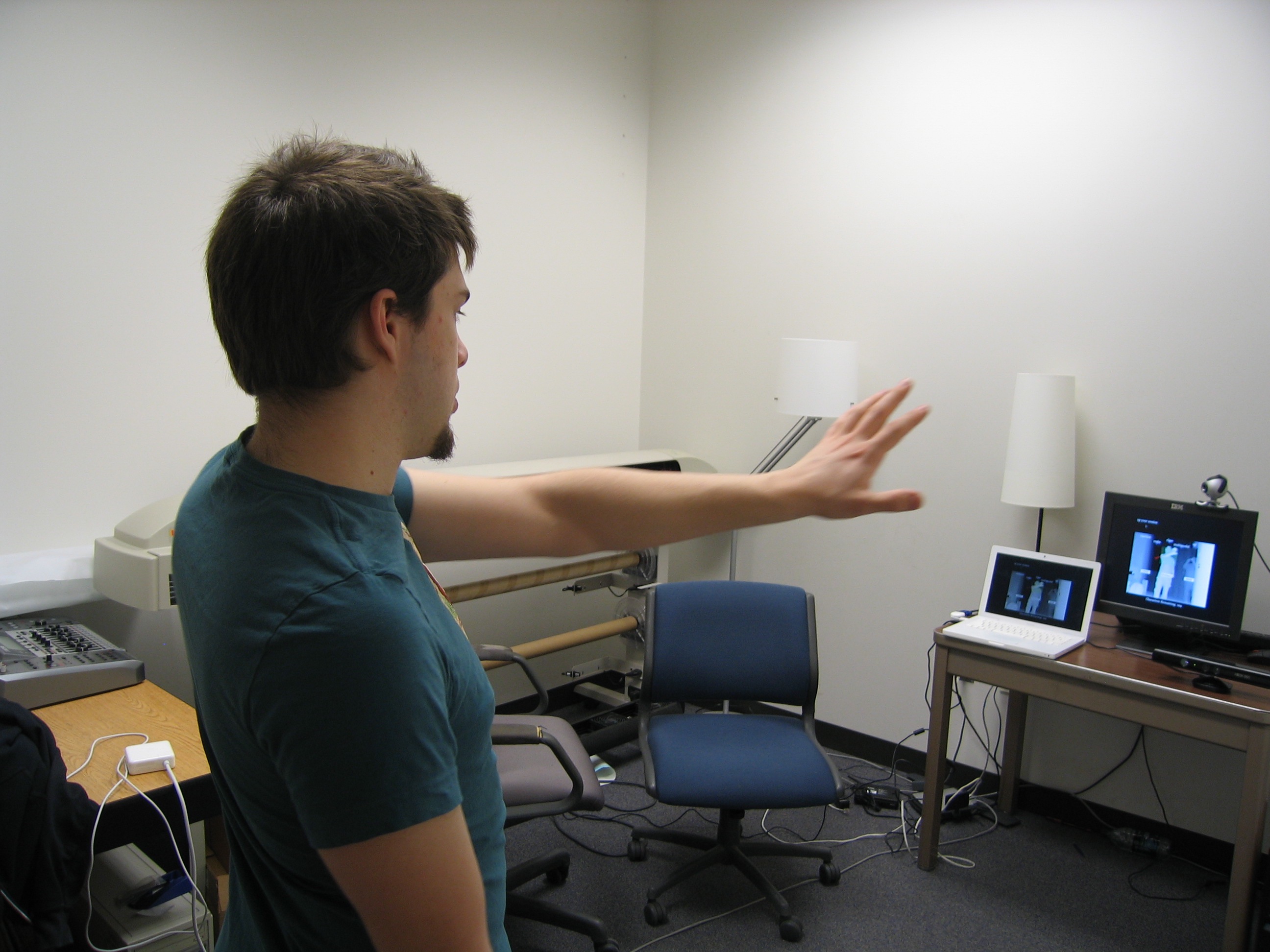
Screenshot "Full Body Twitter app" Johndan Johnson-Eilola
I experienced full body twitter this weekend. Just by moving my body, I wrote a text and sent it into the twitter-sphere. The experimental video installation "Bodies of Language" and conference panel with professors Anne Wysocki and Johndan Johnson-Eilola was really fun. (You can see a snapshot of my interaction with the exhibit after the break.) The discussion also planted the disrupting thought that multi-media needs to get beyond the visual. What? Get beyond the visual?

Full Body Twitter, Noel Radley
Correcting the commonplace that we are progressively more visual, Wysocki and Johnson-Eilola suggested that the point isn't merely to reify the preferred formats of our time but rather to find the edges of these formats, and ourselves. For Johnson-Eilola, who was Skyping into the conference, the edges have to do with the perceptual experience of the hand becoming part of the screen, the kinesthetic experience we have using keyboards for personal computing, or the way we use joysticks with game interfaces. Johnson-Eilola seemed to be thinking about where the body ends and machine starts. Wysocki's point was more about the embodied, affective experience that is at the heart of aesthetic enjoyment. "What an aesthetic experience has been [in the past]...is when you feel your body in connection with the world," Wysocki said. "The intensification of the visual is only one aspect of what's possible with this."

"Ryan-Kincect" by Johndan Johnson-Eilola
Wysocki, who is at University of Wisconsin-Milwaukee, and Johnson-Eilola, who is at Clarkson, worked with Ryan Kornheisl, the lead computer programmer on the project, to develop "Full Body Twitter," which was launched this past weekend at CCCC 2011 in Atlanta. The media station they created coordinates Twitter with a video recognition interface (the Kinect gaming console). When you approach the t.v. screen, your body's form appears/moves in pixelated green. Near the top of the screen, words appear and disappear in large white text. You use an orange cursor (a circle), which recognizes and follows the human hand, and with the cursor, you move the words, one by one, into a green box. The system interacts with Twitter at two points: the white floating words are taken in real time from a Twitter feed. When you string together the words and hold send, your phrase appears via the Twitter feed @t3xtile.
 Screenshot of 'Whole" by miamercado
Screenshot of 'Whole" by miamercado
"Bodies of Language" was the most suggestive of the CCCCs panels I attended, precisely because it seemed to be on the frontiers of media studies, attuned to the most recent developments in gestural aesthetic psychology, the latest gaming interfaces, as well as social media. However, I was also struck that the media was not an end in itself. Wysocki and Johnson-Eilola, for one, completed the project in a relatively short time (They worked with Kornheisl for about a month implementing the actual application). I think this speaks to the fact that we can do experimental Digital Humanities work that remains a good use of our time. Also, Wysocki's connection of the installation to pedagogy really justified the why and the value of using media in the classroom. These interfaces can be used for students to "represent the experience of having the bodies that they have," Wysocki said. The interactive Flash-based project Whole by a student of Wysocki demonstrated her point quite beautifully.
Recent comments
2 years 29 weeks ago
2 years 44 weeks ago
2 years 44 weeks ago
2 years 50 weeks ago
3 years 4 weeks ago
3 years 4 weeks ago
3 years 4 weeks ago
3 years 6 weeks ago
3 years 6 weeks ago
3 years 6 weeks ago